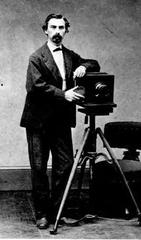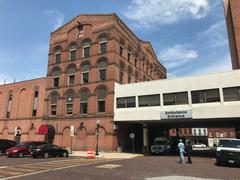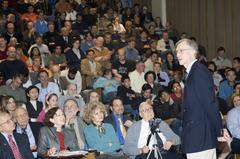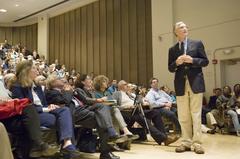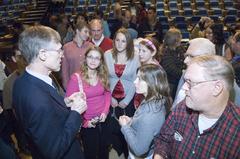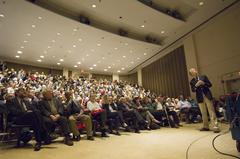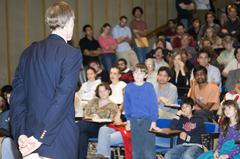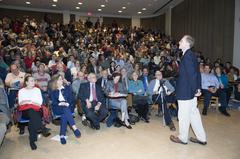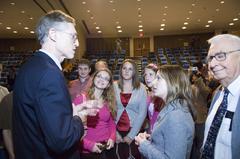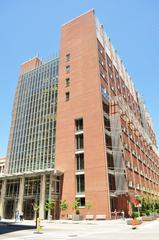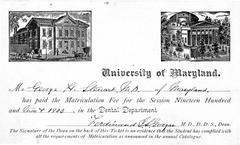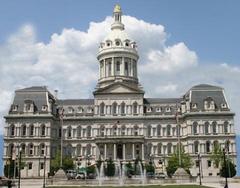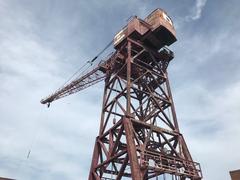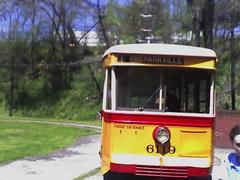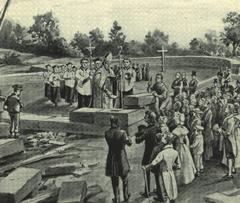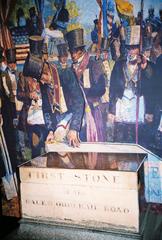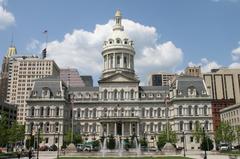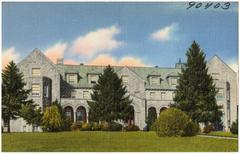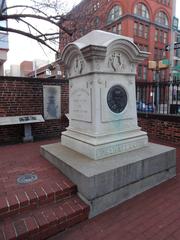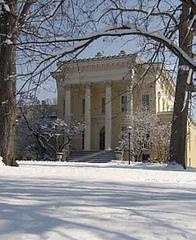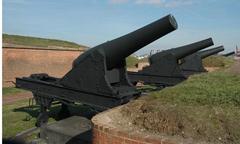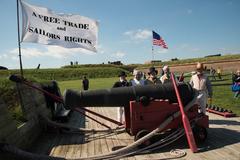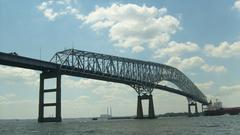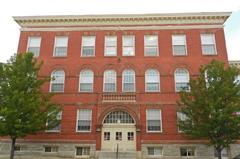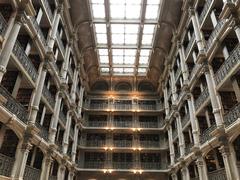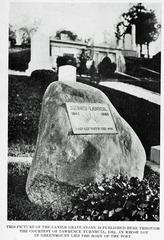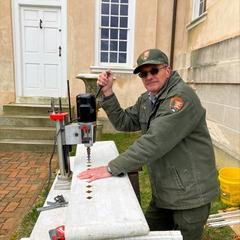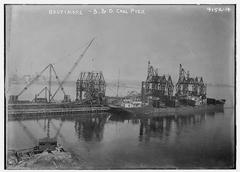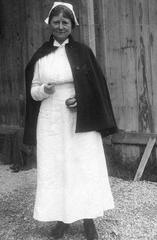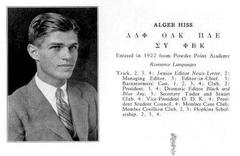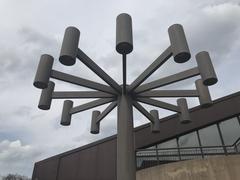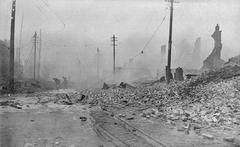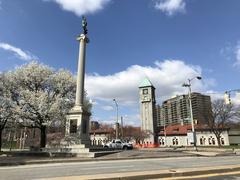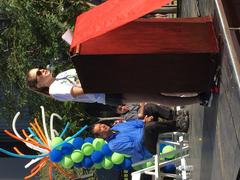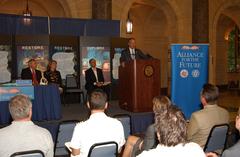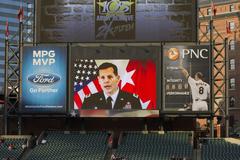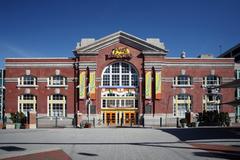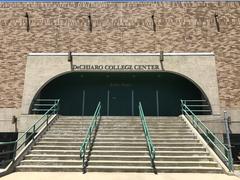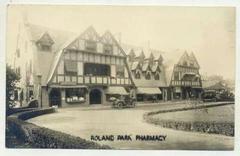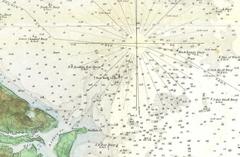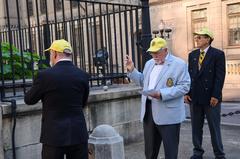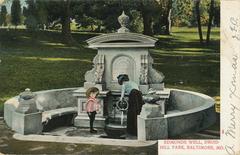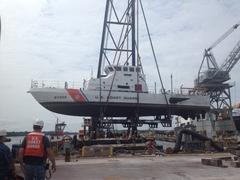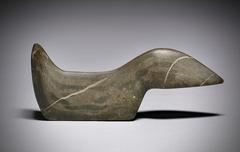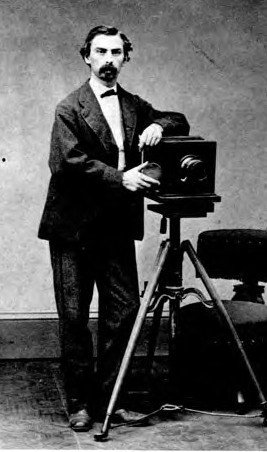
University of Maryland, Baltimore Visiting Hours, Tickets, and Historical Sites Guide
Date: 14/06/2025
Introduction
The University of Maryland, Baltimore (UMB) is a landmark institution located in downtown Baltimore, celebrated for its dual legacy as a premier academic health center and a centerpiece of the city’s historical and cultural landscape. Founded in 1807 as the nation’s first public medical school, UMB has since grown into a hub of innovation, home to six nationally ranked professional schools: Medicine, Law, Dentistry, Pharmacy, Nursing, and Social Work. The campus showcases a blend of historic buildings like the renowned Davidge Hall—the oldest continuously used medical teaching facility in the U.S.—and modern research complexes, all embedded in an urban environment that connects seamlessly with Baltimore’s vibrant neighborhoods and attractions (UMaryland Fast Facts; Maryland Manual).
This guide is crafted to help prospective visitors, students, and history enthusiasts plan a meaningful visit to UMB. It features essential visitor information, campus highlights, historical context, travel tips, and guidance to nearby attractions, ensuring a comprehensive and enjoyable experience at one of Baltimore’s most significant historic sites (UMB Facilities Master Plan; Dental School History).
Table of Contents
- Early Foundations and Growth (1807–1850s)
- Expansion of Professional Schools (1820s–1840s)
- Consolidation and Urban Development (Late 19th–Early 20th Century)
- Integration into the University System of Maryland (1988–1997)
- Modern Era: Academic Excellence and Visitor Highlights
- Visitor Information: Hours, Tickets, Tours, Accessibility, and Transportation
- Architectural and Cultural Heritage
- Diversity, Equity, and Community Engagement
- Frequently Asked Questions (FAQ)
- Campus Landmarks and Features
- Practical Tips for Visitors
- Plan Your Visit
- Summary and Next Steps
- Reliable Sources and Further Reading
Early Foundations and Growth (1807–1850s)
UMB’s origins lie in the 1807 chartering of the College of Medicine of Maryland, making it the oldest public medical school in the U.S. (UMaryland Fast Facts). By 1812, the institution was rechartered as the University of Maryland, expanding its mission to other professional disciplines. Davidge Hall, constructed in 1812, stands as a National Historic Landmark and the oldest continuously used medical school building in the country (Maryland Manual; Zippia).
Expansion of Professional Schools (1820s–1840s)
During the early 19th century, UMB established several groundbreaking professional schools:
- 1824: Maryland Law Institute, precursor to the Maryland Carey School of Law, among the nation’s oldest law schools (UMaryland Fast Facts).
- 1840: Baltimore College of Dental Surgery, the world’s first dental college (Dental School History).
- 1841: College of Pharmacy, fourth-oldest pharmacy school in the U.S. (UMaryland Fast Facts).
These additions reinforced UMB’s commitment to multidisciplinary professional education.
Consolidation and Urban Development (Late 19th–Early 20th Century)
As UMB’s reputation grew, the campus expanded within downtown Baltimore, integrating new facilities and forging partnerships with major medical centers like the University of Maryland Medical Center (UMMC) and the Veterans Affairs Medical Center (VAMC) (UMB Facilities Master Plan).
Integration into the University System of Maryland (1988–1997)
UMB’s integration into the University System of Maryland in 1988, and the subsequent renaming in 1997, affirmed its foundational status within the state’s higher education landscape (Maryland Manual; UMaryland Registrar).
Modern Era: Academic Excellence and Visitor Highlights
Today, UMB enrolls over 6,600 students and employs more than 8,000 faculty and staff. Its 65-acre campus includes 57 buildings, offering 97 degree and certificate programs across its six professional schools and the Graduate School (UMaryland Fast Facts). In Fiscal Year 2024, research funding reached $638 million, supporting innovations in biomedical and public health research.
Visitor Highlights
- Davidge Hall: Tours of this 1812 landmark provide insight into early medical education and architecture.
- School of Dentistry: View artifacts in the Dr. Samuel D. Harris National Museum of Dentistry (Dental School History).
- Special Events: UMB regularly presents lectures, health fairs, and cultural programs—check the UMB event calendar for updates.
Visitor Information: Hours, Tickets, Tours, Accessibility, and Transportation
- Visiting Hours: Most campus buildings are open Monday–Friday, 8:00 AM–6:00 PM. Verify specifics for museums and libraries on the UMB website.
- Tickets and Tours: General campus access is free. Guided tours—such as historical or themed tours—can be booked via the UMB Campus Tours page.
- Accessibility: The campus is fully wheelchair accessible. For accommodations, contact UMB Accessibility Services.
- Getting There: UMB is accessible by car, Light Rail, Metro Subway, and city bus. Visitor parking is available in campus garages—see UMB Parking Services for details.
- Nearby Attractions: Inner Harbor, Walters Art Museum, Mount Vernon, Fells Point, and Lexington Market are all within easy reach.
Architectural and Cultural Heritage
UMB’s campus features a remarkable range of architectural styles, from the neoclassical Davidge Hall to state-of-the-art research complexes like the Health Sciences Facility III. Public art installations and landscaped greenways create a welcoming environment that honors both tradition and innovation (UMB Facilities Master Plan).
Diversity, Equity, and Community Engagement
UMB fosters a culture of respect, equity, and community service. Its diverse student body (67% in-state, 33% out-of-state as of Fall 2024) and initiatives like the Community Engagement Center (CEC) underscore UMB’s deep connections to Baltimore’s neighborhoods (UMaryland Fast Facts).
Frequently Asked Questions (FAQ)
Q: What are the University of Maryland, Baltimore visiting hours?
A: Most buildings are open Monday–Friday, 8:00 AM–6:00 PM. Specific facilities may have different hours.
Q: Is there an admission fee or ticket required?
A: No general admission fee; certain guided tours or events may require advance registration.
Q: Are tours available?
A: Yes, both guided and self-guided tours are available. Book in advance through the UMB Campus Tours page.
Q: Is the campus accessible for those with disabilities?
A: Yes, all major buildings are wheelchair accessible, with services available upon request.
Q: What are some nearby attractions?
A: Baltimore’s Inner Harbor, the Walters Art Museum, Maryland Science Center, and historic neighborhoods are close by.
Campus Landmarks and Features
Health Sciences and Research Facilities
- Health Sciences Facility (HSF) III: A modern, glass-fronted research building focused on interdisciplinary biomedical research.
- University of Maryland Medical Center: A leading academic hospital; public areas are open during posted visiting hours (UMaryland Capital Budget, 2024).
School of Social Work
- East and West Buildings: Historic and modern structures, with a new, innovative building planned for completion in 2027.
Pharmacy Hall and Dental School
- Pharmacy Hall: A blend of early 20th-century and modern architecture.
- School of Dentistry: Home to the world’s oldest dental school and a dental museum.
Carey School of Law and Thurgood Marshall Law Library
- Law School: Features exhibits on legal history and civil rights, open to the public during regular hours.
Green Spaces
- Davidge Hall Gardens and Plaza Park: Tranquil outdoor spaces with public art and seasonal plantings.
Museums and Exhibits
- Health Sciences and Human Services Library (HS/HSL): Features medical history exhibits and a rare book collection.
- Davidge Hall Museum: Showcases early medical instruments and the history of medical education.
Practical Tips for Visitors
- Parking: Use campus garages or metered street parking; see UMB Parking Services.
- Dining: Campus cafés and nearby Lexington Market offer a range of options.
- Visitor Hub: The SMC Campus Center provides maps, tour schedules, and visitor resources.
- Safety: UMB Police offer safety escorts and emergency assistance; remain aware of your surroundings after dark.
- Weather: Baltimore has four seasons—check the forecast before visiting.
Plan Your Visit
Davidge Hall is open Monday–Friday, 9:00 AM–5:00 PM. Guided tours are free but require advance booking—contact the information desk at 410-706-3100 or email [email protected]. For accessibility details, directions, and event listings, consult the UMB Interactive Campus Map and UMB Event Calendar.
Download the Audiala mobile app for interactive maps, guided tours, and visitor tips. Follow UMB’s official channels for updates.
Summary and Next Steps
The University of Maryland, Baltimore is more than an academic institution—it is a living testament to the evolution of American medical, legal, and professional education. From Davidge Hall’s storied halls to the cutting-edge Health Sciences Facility and the dynamic Community Engagement Center, UMB offers visitors a seamless blend of history, innovation, and community spirit (UMB Davidge Hall; UMB Campus Tours). Make the most of your visit by checking current hours and events on the UMB official website, booking tours in advance, and enhancing your experience with digital resources.
Reliable Sources and Further Reading
- UMaryland Fast Facts
- Maryland Manual
- UMB Facilities Master Plan
- Dental School History
- UMaryland Registrar Academic Calendar
- UMB Campus Tours
- UMB Davidge Hall
All information is subject to change. Please verify details before your visit.
